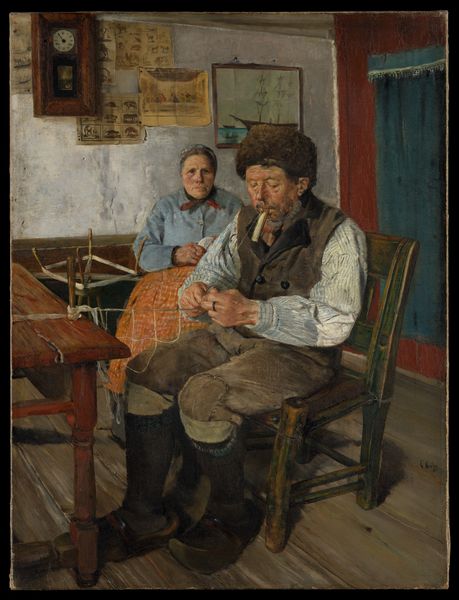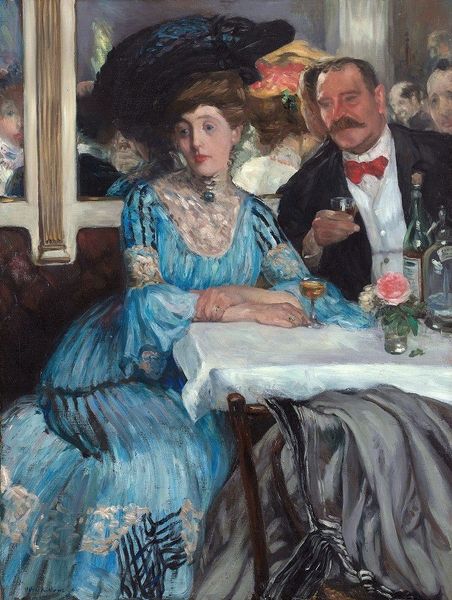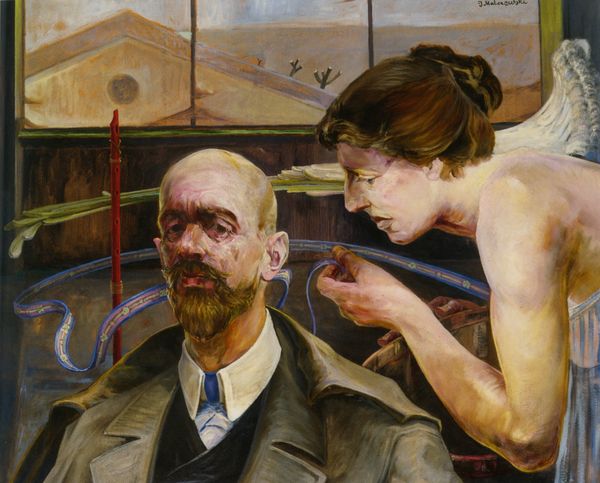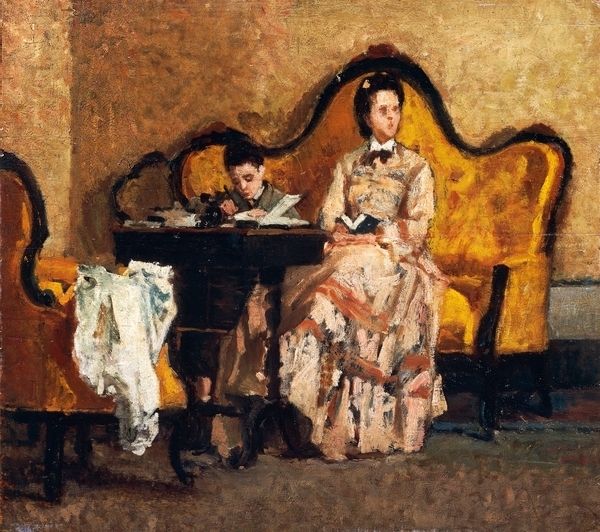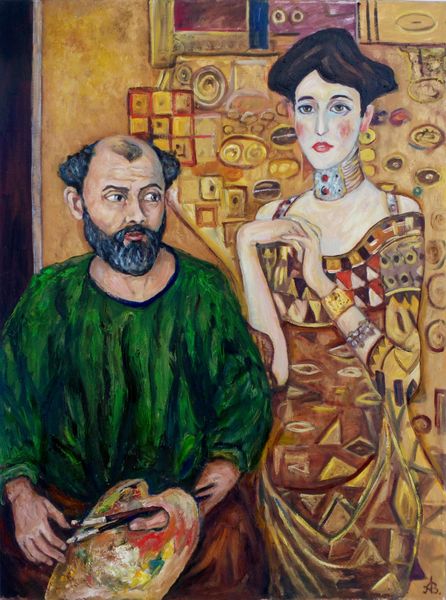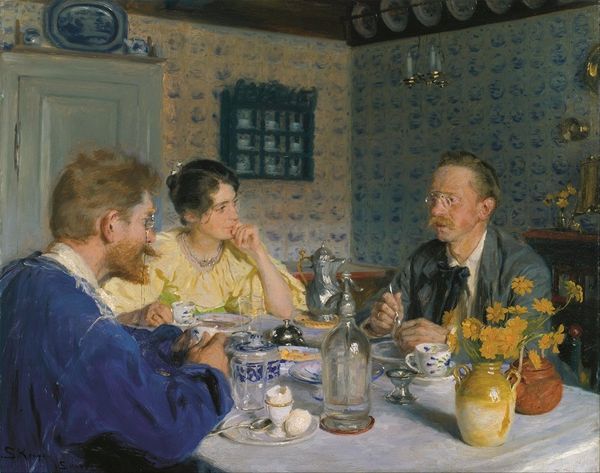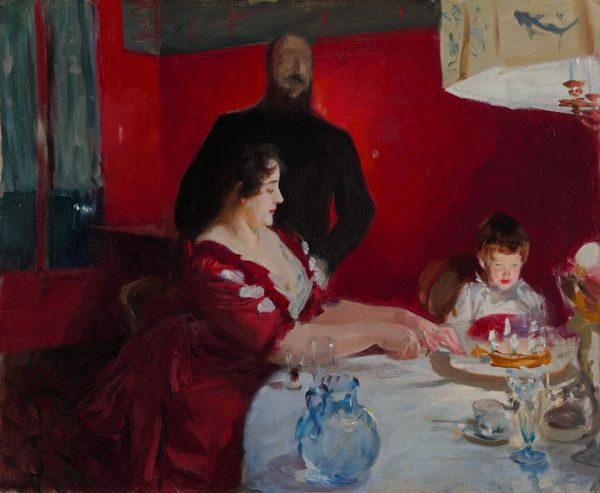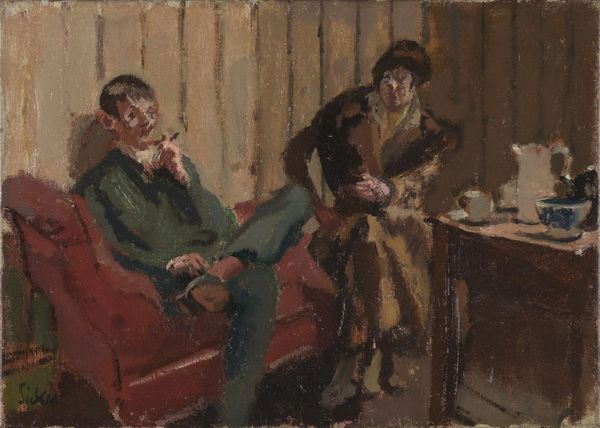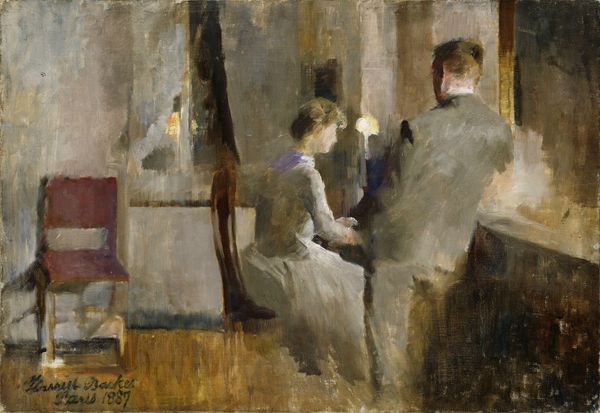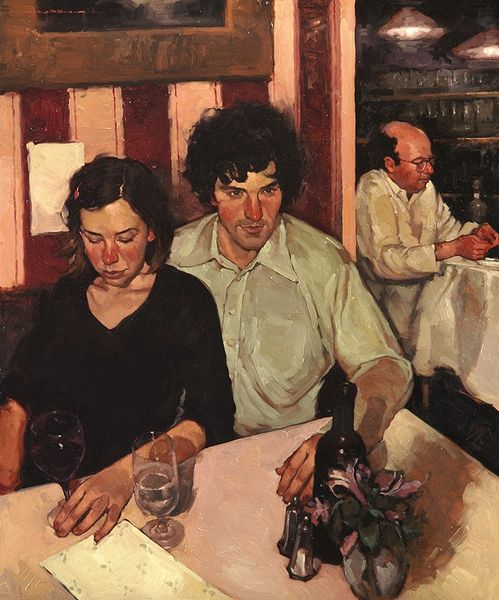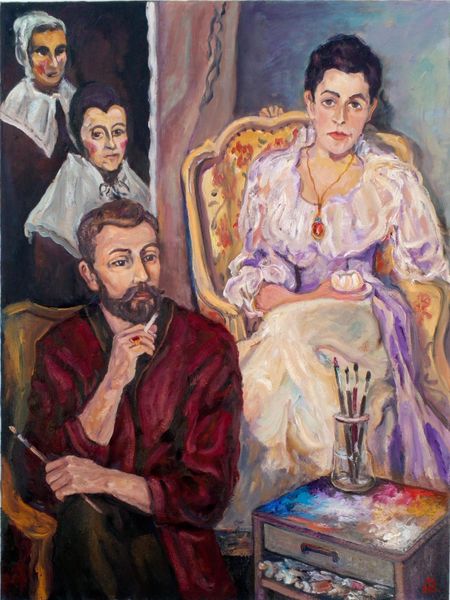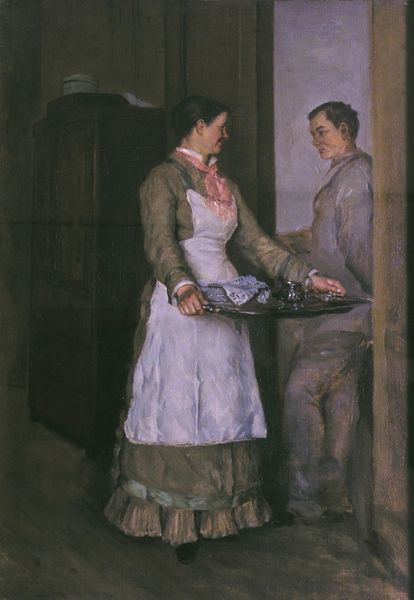
painting, oil-paint
#
figurative
#
painting
#
oil-paint
#
oil painting
#
group-portraits
#
portrait drawing
#
genre-painting
#
portrait art
#
realism
Copyright: Public Domain: Artvee
Curator: It's a pleasure to introduce George Bellows' 1924 painting, "Mr. and Mrs. Phillip Wase," a genre painting executed in oil. What's your first take on this double portrait? Editor: Immediately, I am struck by its tonal uniformity. A somber gray suffuses nearly every element. Even the light seems filtered, contributing to the reserved, almost melancholic mood. The figures are static, formally posed. Curator: That gray uniformity speaks, doesn’t it, to the era's socio-economic climate? Bellows often depicted the working class, and this subdued palette might mirror their often-unembellished existence, highlighting the material realities of their lives, the very fabric of their clothes, their worn environment. Editor: Perhaps. But consider the composition. The artist employs a clear division – the couple is physically separated, subtly divided by the line of the couch, while each faces forward creating a rigid and hierarchical dynamic. The parrot offers an intriguing note as well, its presence a vertical, textural form in the background. Curator: I see that separation more in terms of the societal expectations of gender roles at the time, her holding a book signifies intellect, a move towards liberation, and his more relaxed attire possibly reflecting working conditions, the couple being placed closely together showing social mobility and a newly emerged middle class through industrial development in this period. Editor: An interesting proposition! Still, the more I look, the more formal tensions arise, demanding a formal, and perhaps slightly distant, reading. There is the mirroring within the oval frame, a miniature portrait mimicking the larger scene, drawing connections between generations as an aesthetic tool to bring cohesion into the painting. The eye is drawn from one to the next, completing this family lineage. Curator: I am wondering about Bellows' intentions – by placing them on display, how much did he care about their true selves, or the viewer's? It appears more important what he himself expresses through this, the rise of urban America and capitalism, that are expressed within. The formal, perhaps, obscures the individual. Editor: That's where we diverge. It is precisely the formal structure that allows, or even forces, meaning. We cannot escape it; instead, the power lies in understanding the artist's aesthetic language, the symbols in which we interpret and understand the couple. Curator: Indeed. Ultimately, analyzing Bellows' social commentary within the art world can serve as an anchor to understanding not just his art, but that era. Editor: And I find such social readings most convincing, once one fully decodes the visual grammar Bellows employs in paintings such as this.
Comments
No comments
Be the first to comment and join the conversation on the ultimate creative platform.
